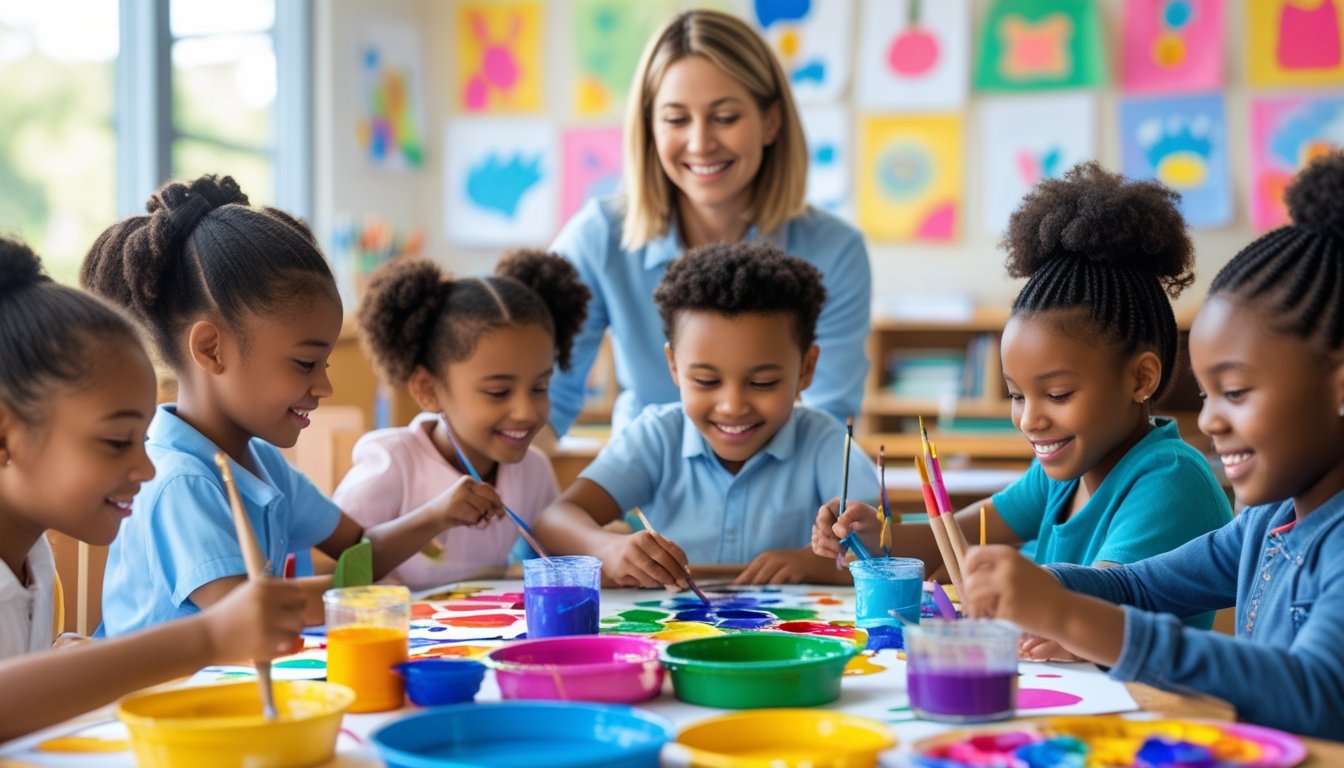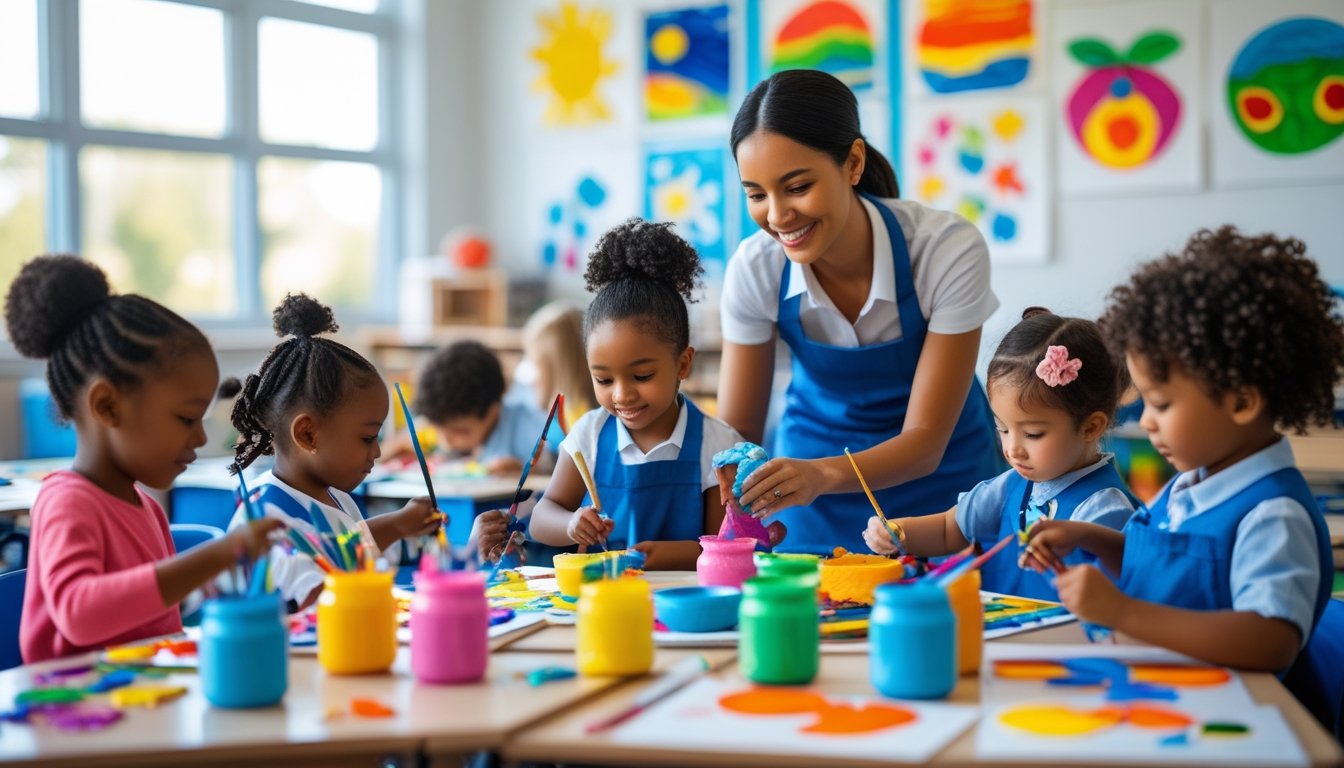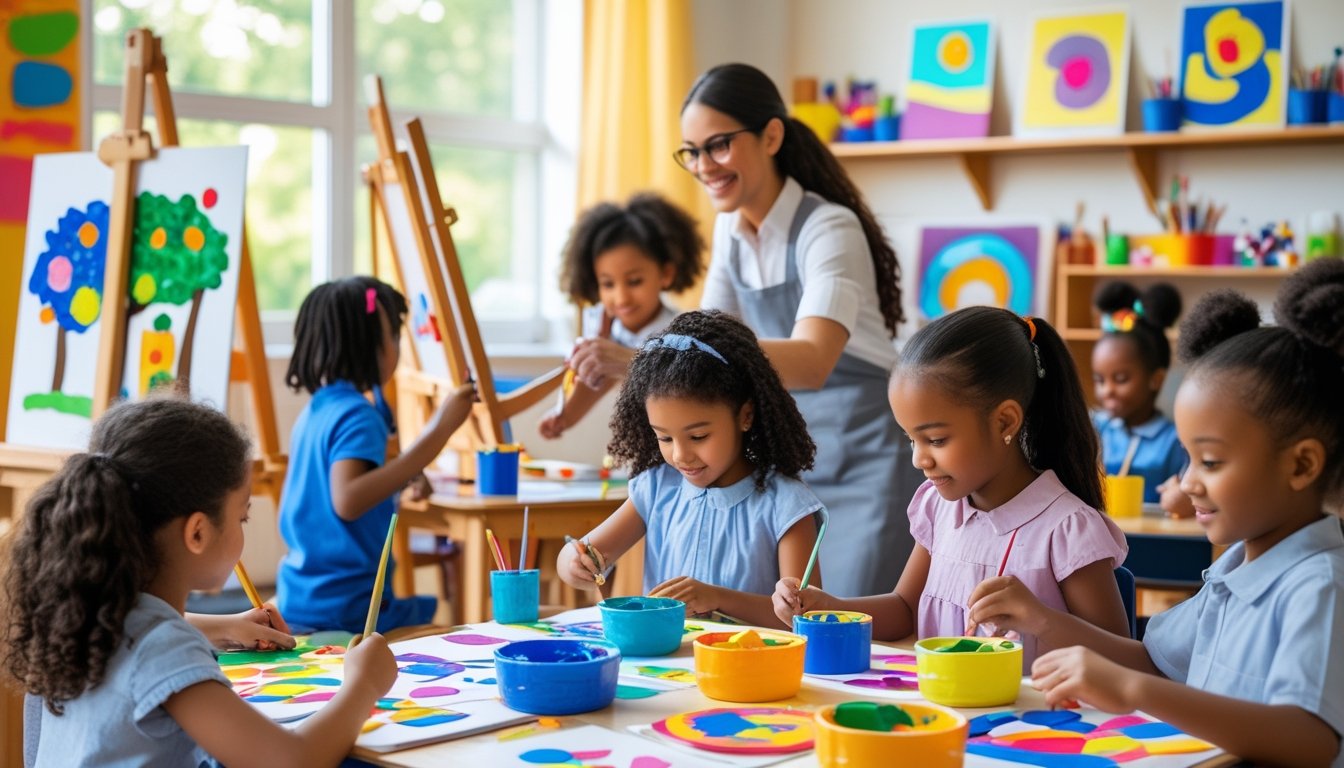Late updated: 10 Oct 2025 08:10
Written by:
Exploring Benefits Of Art Education For Children: Enhancing Creativity And Confidence
Art education plays a vital role in the development of young minds, offering much more than just creative enjoyment. It introduces children to a world where creativity and imagination thrive, impacting various aspects of their lives in profound ways. Art education not only enhances creativity but also significantly boosts critical thinking and problem-solving skills, making it an essential component of a well-rounded education.

As we explore the benefits of art education for children, it's important to recognise its impact on cognitive and social development. Beyond creativity, engaging in art activities enhances fine motor skills and improves hand-eye coordination, which can positively influence academic performance in areas like reading, maths, and science.
Furthermore, art education fosters emotional expression and cultural awareness, helping children to navigate their feelings and understand different perspectives. By cultivating self-confidence and encouraging teamwork, art prepares children for future success in various fields. Let’s delve deeper into the many ways art education shapes the lives of our youth.
Key Takeaways
- Art education improves creativity and critical thinking.
- Engaging in arts boosts academic performance.
- Art promotes emotional expression and cultural awareness.
Key Benefits of Art Education for Children

Art education offers a treasure trove of benefits for children, including enhancing creativity, developing critical skills, promoting social-emotional growth, and building confidence. These are fundamental aspects of child development, significantly impacting both academic and personal lives.
Fostering Creativity and Imagination
Art education cultivates an environment where creativity and imagination thrive. Through activities like drawing, painting, and sculpting, children explore new ideas and perspectives. Creativity is not just limited to artistic expression; it fosters curiosity and encourages children to think outside the box. By engaging in these activities, they learn to express their inner world visually and conceptually. Such imaginative pursuits nurture creative problem-solving, which transcends the arts and enriches other learning areas.
Development of Critical Thinking and Problem-Solving Skills
Art education is crucial in developing critical thinking and problem-solving skills. While engaging in artistic tasks, children encounter challenges that require thoughtful solutions. Whether deciding how to depict a certain emotion or tackling the logistics of an art project, they learn to think critically and analyse outcomes. This process instils a mindset of perseverance and resilience, equipping them to handle complex situations in other academic areas with a strategic approach.
Enhancing Social and Emotional Growth
Art education contributes significantly to emotional development and emotional intelligence. Participating in group projects encourages collaboration, and children learn to appreciate diverse perspectives. Art also serves as a therapeutic outlet, allowing children to express emotions safely. By understanding and processing their feelings through art, they develop skills that contribute to empathy and communication. Such growth is crucial for building strong interpersonal relationships and a sense of community.
Building Confidence and Resilience
Engaging in art helps children build confidence and resilience. Successfully completing an art project, receiving positive feedback, or simply expressing oneself through an artwork contributes significantly to self-esteem. Children learn that mistakes are part of the creative process, not failures but opportunities for growth. This mindset encourages resilience; they understand that persistence and adaptation are key to overcoming challenges. Art education thus becomes a cornerstone for developing self-assured, resilient individuals prepared to face the future with confidence.
Practical Impacts of Art Education on Child Development
Art education touches various aspects of child development, enhancing both cognitive and social abilities. It cultivates motor and coordination skills, deepens emotional and cultural understanding, and also positively impacts school performance.
Improving Fine Motor Skills and Hand-Eye Coordination
In our experience, art activities such as drawing, painting, and sculpture contribute significantly to fine motor skills development. By manipulating materials like pencils, crayons, and brushes, children strengthen the small muscles in their hands and fingers.
Hand-eye coordination is also refined through the need to guide tools or materials along a desired path. Through repeated practice, children learn to be precise with their movements. Art supplies, ranging from simple chalk to complex clay structures, offer various ways for children to gain fine motor control. This skill extends beyond art and is transferable to everyday tasks like writing and using cutlery.
Promoting Empathy and Cultural Awareness
Our observations reflect that art education helps children appreciate diversity and fosters empathy. By exploring artwork from different cultures, youngsters gain insights into varied perspectives and traditions. This exploration aids in developing a deeper understanding of cultural nuances, which heightens their awareness and acceptance of different backgrounds.
Activities such as collaborative projects encourage children to communicate and share ideas, leading to enhanced empathy and listening skills. When they see stories and emotions expressed in art, they learn to connect with feelings, both their own and those of others, fostering a compassionate outlook toward the world.
Supporting Academic Performance and School Engagement
Art education plays a vital role in supporting students’ academic journeys. Engaging in art activities can lead to improved performance in subjects like maths and literacy. The cognitive processes involved in artistic creation can mirror problem-solving and critical thinking skills applicable in academic subjects.
Furthermore, participation in the arts increases school engagement. Children often view these classes as a highlight of their school day. The creative freedom and sense of accomplishment garnered from completing art projects motivate children to attend school, participate, and excel across various subjects. Art classes create an environment where learning is enjoyable, making school a positive experience.
Frequently Asked Questions

Exploring how art education impacts children's development yields numerous insights. Our discussion includes its effect on cognitive growth, creativity enhancement, social and emotional benefits, academic performance, fine motor skills, and long-term advantages.
How does art education influence children's cognitive development?
Art education engages brain functions that stimulate cognitive growth. When children participate in art activities, they develop problem-solving skills. Visual arts can also enhance skills in other subjects like reading, math, and science by encouraging a different way of thinking and processing information.
In what ways can art education enhance creativity in young learners?
Arts offer a platform for students to express themselves uniquely. By experimenting with different mediums and techniques, children learn to innovate and think outside traditional frameworks. This process fosters a sense of imagination and exploration, crucial elements in developing creative thinking abilities.
What role does art education play in the social and emotional development of children?
Art activities provide opportunities for kids to work together, thereby improving their teamwork and communication skills. Creating art can be therapeutic, offering an outlet for emotional expression. Art education also plays a role in building self-confidence as children learn to express their thoughts and feelings through creative means.
Can involvement in the arts improve academic performance for pupils?
Participation in art education is linked to improved academic performance. Studies suggest that students involved in art programs often perform better in subjects like maths and languages. Regular engagement in art fosters concentration, discipline, and perseverance, all of which can positively impact overall academic success.
How does art education contribute to the development of fine motor skills in children?
Creating art involves activities like drawing, cutting, and sculpting, which require precise hand movements and coordination. These actions help in the development of fine motor skills. As children engage more with arts, their hand-eye coordination and dexterity improve, which are necessary for many daily tasks.
What are the long-term benefits of engaging in art education during early childhood?
Early engagement in art education lays a foundation for lifelong skills. Children who engage in art from an early age tend to have better critical thinking and problem-solving skills. They also gain a greater appreciation for cultural diversity and develop into well-rounded individuals capable of both analytical and creative thinking.
